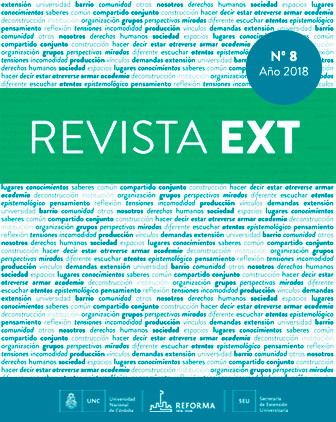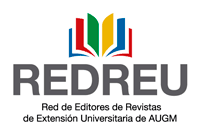A bridge between university students and children: Do we read a story?
Keywords:
reading, short stories, activities, linguistic competence, extension-action projectAbstract
During 2016, we carried out the extension-action project Shall we read a story? at the Children’s Home José Bainotti through the Extension Secretary of the School of Languages. Professors, professionals of other fields and undergraduate students of the School took part in the project. The main goal was to make children value reading and literature through short stories for children and to increase their language exposure since the foundations for their cognitive development are laid at childhood (Piaget, 1984). However, the children born in hard environments are usually exposed to few words which widens the gap with the children born in more privileged environments (Fernald, Marchman & Weisleder, 2013). The project Shall we read a story? aimed at making the children at the Home interested in literature through pre and post reading activities planned according to Piaget’s stages of cognitive development (Williams & Burden, 1997). Thanks to the project, the children were able to enjoy the weekly workshops with different characters, stories and games while the members of the project were able to impart their knowledge and learn from unforgettable experiences.
Downloads
References
Dozo Moreno, S. (16 de Septiembre de 2006). Mempo Giardinelli: “La lectura es la gran enemiga del poder”. La Nación. Recuperado de https://www.lanacion.com.ar/840984-mempo-giardinelli-la-lectura-es-la-gran-enemiga-del-poder
Educapeques (2008). Beneficios de contar cuentos a niños y niñas. Extraído el 06/04/2016 de http://www.educapeques.com/escuela-de-padres/beneficios-de-contar-cuentos.html
Hart, B. & Risley, T.(2003) The Early Catastrophe: The 30 Million Word Gap by Age 3. American Educator, pp.4-9. Fecha de consulta 6 de junio de 2016. http://www.aft.org//sites/default/files/periodicals/TheEarlyCatastrophe.pdf
Hoffman, J. & Cassano, C. (2013). The beginning: Reading with babies and toddlers [El comienzo: La lectura con los bebés & niños pequeños]. In J. A. Schickedanz & M. F. Collins (Eds.), So much more than ABCs: The early phases of reading and writing [Muchísimo más que el ABC: Las facetas tempranas de la lectura & la escritura]. Washington, DC: National Association for the Education of Young Children.
Fernald, A., Marchman, V., & Weisleder, A. (2013). SES differences in language processing skill and vocabulary are evident at 18 months. Developmental Science, 16, 234–248.
Noble, K., McCandliss, B., & Farah, M. (2007). Socioeconomic gradients predict individual differences in neurocognitive abilities. Developmental Science, 10, 464-480.
Piaget, J (1984) La representación del mundo en el niño. Ediciones Morata, 6ta edición: Madrid.
Somerset Maugham, M. (s.f.). [citas]. Recuperado de https://akifrases.com/frase/130955
Suskind, D. (2015) Thirty Million Words. New York: Dutton. 2015
Vygotsky, L. (1973). Pensamiento y lenguaje. Buenos Aires: La Pléyade.
Williams, M. & Burden, R. (1997). Psychology for language teachers: A social constructivist approach. Cambridge: CUP.
Zapata Ruiz, T. (2007). El cuento de hadas, el cuento maravilloso o el cuento de encantamiento: Un recorrido teórico sobre sus características literarias. Cuenca, España: Ediciones de la Universidad de Castilla-La Mancha.
Downloads
Published
Issue
Section
License
Aquellos autores/as que tengan publicaciones con esta revista, aceptan los términos siguientes:
- Los autores/as conservarán sus derechos de autor y garantizarán a la revista el derecho de primera publicación de su obra, el cuál estará simultáneamente sujeto a la Licencia de reconocimiento de Creative Commons que permite a terceros compartir la obra siempre que se indique su autor y su primera publicación esta revista.
- Los autores/as podrán adoptar otros acuerdos de licencia no exclusiva de distribución de la versión de la obra publicada (p. ej.: depositarla en un archivo telemático institucional o publicarla en un volumen monográfico) siempre que se indique la publicación inicial en esta revista.
- Se permite y recomienda a los autores/as difundir su obra a través de Internet (p. ej.: en archivos telemáticos institucionales o en su página web) después del proceso de publicación, lo cual puede producir intercambios interesantes y aumentar las citas de la obra publicada. (Véase El efecto del acceso abierto).





